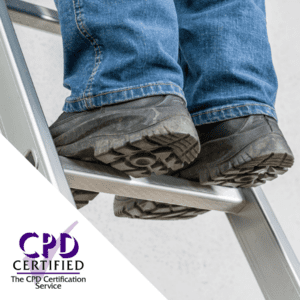Article 6 /7. Ladder Safety Guidelines Inspecting the Condition of Ladders. Employers need to make sure that any ladder or stepladder is both suitable for the work task and in a safe condition. However, the employee or user of the ladder also has a duty to inspect the work equipment before attempting the task in order to prevent harm both to himself or others.
Ladder Safety Guidelines Article index
Ladder Safety Guidelines Inspecting the Condition of Ladders
Employers need to make sure that any ladder or stepladder is both suitable for the work task and in a safe condition before use.
As a guide, the HSE recommends that operatives should only use ladders or stepladders that:
- Have no visible defects. They should have a pre-use check each working day.
- Have an up-to-date record of the detailed visual inspections carried out regularly by a competent person. These should be done in accordance with the manufacturer’s instructions. (Ladders that are part of a scaffold system still have to be inspected every seven days as part of the scaffold inspection requirements).
- Are suitable for the intended use, ie are strong and robust enough for the job.
- Have been maintained and stored in accordance with the manufacturer’s instructions. (i.e. not just thrown into the back of a van with other tools and equipment piled on top).
A detailed visual inspection is similar to pre-use checks, in that it is used to spot defects and can be done on site by a competent employee.
- Pre-use checks make sure that a ladder is safe to use and are for the immediate benefit of the ladder user.
- These checks do not need to be recorded. Any problems or issues should be reported to a manager.
Detailed visual inspections are the responsibility of the employer. They should be carried out at fixed intervals and recorded. Records of these inspections provide a snapshot of the state of the ladders over time.
When doing an inspection, look for:
- Damaged or worn ladder feet.
- Twisted, bent or dented stiles.
- Cracked, worn, bent or loose rungs.
- Missing or damaged tie rods.
- Cracked or damaged welded joints, loose rivets or damaged stays.
Pre-use checks and inspections of ladder stability devices and other accessories should be performed in accordance with the manufacturer’s instructions.
Safe Use of Ladders and Stepladders –
Online Safety Training.
NEXT> Ladder safety guidelines – Ladder standards
Source: https://www.hse.gov.uk/work-at-height/ladders/when-how-to-use-ladders-safely.htm


